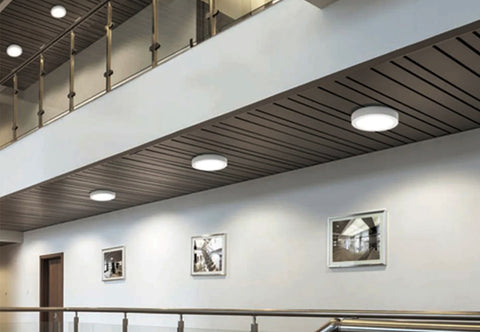
Principles Of Lighting For Photography
In photography, light is like life. It can take an ordinary setting and make it into something spectacular. Whether you're an experienced photographer or just starting, you'll benefit significantly from familiarity with basic lighting concepts.
The quality of a picture dramatically depends on the quality of its illumination. It can provide dimension, emphasise surface details, and reveal an object's natural hues. The ability to direct light gives photographers more leeway in setting the tone for their photographs. Photographers may employ a wide range of methods to improve their work, regardless of whether they are working with artificial or natural light.
Using reflectors or diffusers may reduce the intensity of shadows and provide more uniform illumination. Achieving the intended appearance in photographs also requires understanding the colour temperature of light sources. Learning how to control light is, in the end, a constant process that calls for trial and practice. But if you put in the time and effort, your photography will improve to the point where you can capture magnificent scenes.
Let's explore the relationship between light, shadow, colour, and composition to better our photographic images. Learning these rules can help you take your photography to the next level.
The Principles of Light
Understanding light's qualities and how they come out is essential for photographers. Natural or artificial, gentle or harsh, direct or dispersed, light comes in many forms. Adjusting the direction of light can drastically change the tone and effect of a picture may. Photographers often experiment with various lighting setups, such as backlighting, side lighting, and front lighting, to achieve multiple effects. You may learn how light interacts with your subject and the world around them via observation and experimentation.

Influencing Lighting Effects
The contrast between a photo's shadows and highlights may make or break its aesthetic appeal. When used correctly, light and shadow give your photographs depth, character, and texture. If you can manipulate light and dark areas, you may draw attention to specific details, add drama, or communicate emotion. You may create visual harmony and balance by working shadows and highlights using lighting techniques, including fill light, bounce light, and reflectors.

Using the Sun Light
A photographer's greatest friend is natural light. The sun will be in multiple places throughout the day, providing artists with a dynamic backdrop. The time just after dawn or before sunset is called "golden hour" because of the warm, gentle light, it casts on its topics. Learning to make the most of natural light requires considering its intensity, direction, and colour temperature. Awareness of these aspects allows you to make sound choices and take fabulous images drenched in natural beauty, whether shooting outside or using window light inside.
Enhancements in Artificial Lighting
The use of artificial lighting gives photographers many new options for expression. A wide variety of lighting effects are available, from constant to strobes and flashes. Knowing various artificial light sources' colour temperature and intensity is crucial for accomplishing goals.

Modifiers like softboxes, umbrellas, and gels enable you to transform artificial light in various ways, allowing you to design a lighting setup that perfectly matches your creative vision. When working with artificial light, you have complete control over the light's intensity, colour, and direction, opening a world of possibilities for personal expression.

Expertise in artificial lighting is also essential for photographers and filmmakers. It's crucial for establishing the scene's tone and atmosphere and may make or break a shot. In addition, capturing a natural-looking photograph requires a firm grasp of combining the two types of lighting. Understanding exposure, colour theory, and compositional skills are all necessary.

You may capture the essence of your topic and successfully express your message by combining these talents with creative vision to make amazing photos. Artificial lighting may help you reach your creative objectives and elevate your photography to the next level, whether you're shooting portraits, landscapes, or still life. Be bold and try new lighting arrangements and methods since the outcomes might be satisfying.

Harmonising Hue and Saturation
A photograph's tonality and atmosphere are greatly influenced by the colours used. Correct white balance and temperature are essential for accurate colour representation. A picture's warmth or coolness depends on the light's colour and temperature. Learning how to modify white balance settings in-camera or post-processing can help you keep your colours accurate and your images uniform.
The emotional effect of an image may be improved with the help of colour theory in addition to colour temperature and white balance. A feeling of calm and equilibrium may be achieved with complementary hues, while drama and tension can be added with opposing ones.
The degree to which colours are saturated may also alter how we feel about a picture; muted tones produce a feeling of peaceful reminiscence, while vibrant tones make us feel energised. Photographs may have a focal point drawn to them or a certain mood emphasised via selective colour. Overall, controlling and modifying colour in photography is crucial for producing striking and lasting photographs.
Learning how to use light effectively in photography is an ongoing process. To get the desired effect, one has to have a good eye, be willing to experiment, and have an in-depth knowledge of how light, shadow, colour, and composition work together. Ordinary situations may be elevated to captivating visual storytelling using light, shadow, and highlight. Take risks, have patience, and believe in yourself. As you practice, you'll find your approach to photography and be able to take pictures that say something. Learn from the masters of lighting and use their techniques to create stunning photographs.
 Talk On Call
Talk On Call Chat On WhatsApp
Chat On WhatsApp


